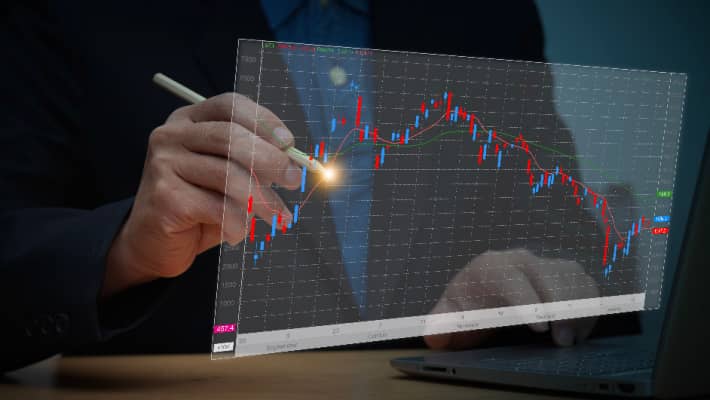Thursday Nov 23 2023 10:20

10 min

Energy commodities trading is a dynamic market that involves buying and selling various energy forms, such as oil and natural gas. For traders, it's crucial to know a lot about this complex market so that you can make smart choices and optimise the value of your assets.
This article will explore four pre-trading essentials that every energy commodities trader should consider before diving into the market. Let's get into it.
Energy commodities work within an intricate supply and demand framework. This framework is subject to the impact of geopolitical events, weather patterns, economic conditions, and technological advancements, all of which collectively determine the price dynamics of energy commodities.
Stakeholders in the energy market, including institutional investors and traders, utilise energy commodity trading to manage the risks linked to other commodities or to seize opportunities presented by advantageous price movements.
Energy commodities trading is commonly facilitated through contracts for differences (CFDs). These contracts enable traders to speculate on the future price movements of different commodities such as crude oil, natural gas, and more.
CFDs are financial instruments that allow traders to profit from the difference between the opening and closing prices of a particular commodity without actually owning the underlying asset. In energy commodities trading, CFDs are commonly used as exchange-traded funds (ETFs) or as individual commodities.
Trading tips are preventative measures to aid traders in avoiding financial risks. These four practical tips will make you more confident and disciplined when trading in energy commodities:

Thorough research and analysis are the bedrock of successful energy commodities trading. You can start by gathering data and information from reputable sources, such as industry reports, government publications, and financial news outlets.
Your collected data will provide insights into supply and demand trends, production levels, and consumption patterns. This data can be a price determinant of the energy commodities you want to trade. It will give you signals when to enter and exit trades.
In addition to data analysis, technical analysis can be a valuable tool for trading energy commodities. Technical analysis involves studying price charts, trends, and patterns to identify potential entry and exit points.
Various indicators and oscillators, such as moving averages, relative strength index (RSI) and Bollinger bands, can help you gauge market sentiment and make more accurate predictions.
The primary price influencers of energy commodities are geopolitical factors, weather and season changes, and government policies.
These disruptions can result in pipeline blockages, shipping interruptions, or production shutdowns, ultimately causing substantial and often rapid price fluctuations in the natural gas or oil market.
Risk is evident in any form of trading, and energy commodities trading is no exception. The volatility and unpredictability of energy prices make risk management strategies necessary to protect your capital and minimise potential losses.
Here are a few fundamental risk management techniques to consider:
Doing so ensures that your losses are contained within a predefined range, reducing the risk of substantial financial setbacks.
For instance, if you decide on a 2% risk per trade, you must guarantee that no more than 2% of your capital is allocated to any position. This method helps maintain consistency in your risk exposure.

A reliable and user-friendly trading platform can make things easy when trading energy commodities.
You must look for a platform that offers real-time market data, advanced charting tools, and a wide range of order types. Additionally, you need to ensure that the platform provides access to the energy commodities markets you are interested in trading.
You can also opt for demo accounts offered by trading platforms to test their features and functionality before committing to real capital. It will allow you to familiarise yourself with the platform and ensure it meets your trading needs.
If you're looking for a trading platform that's known for its reliability and has been regulated in five major markets, markets.com is an excellent choice. With over a decade of experience in the industry, this platform has helped numerous beginner and professional traders alike. In addition, markets.com offers a demo account, allowing you to test the platform and get a feel for it before investing with real money. Whether you're new to trading or an experienced trader, markets.com has the tools and resources to help you succeed in the markets.
Traders must avoid the common pitfalls that can lead to capital losses. To do that, you need to assess yourself if you are making the following traders mistakes:
One common pitfall to avoid is disregarding the basic step of conducting comprehensive research and analysis before making trading decisions.
It would be better to stop relying solely on gut feelings or unverified rumours when trading. These can be highly unreliable sources of information that may lead to misguided actions. Instead, study and analyse the market trends, historical data, and recent news that affect the price of energy commodities.
Another mistake to watch out for is overtrading, which involves executing trades too frequently. Overtrading exposes you to increased market volatility, as impulsive trading decisions may not be well thought out and can lead to unexpected losses.
A clearly defined plan helps you avoid rash decisions driven by emotions or the desire for quick earnings.
It is a grave mistake to disregard risk management in energy commodities trading. An example is an undefined risk tolerance, which can lead to excessive risk-taking.
If you are not using stop-loss orders, it is also an example of not practising risk management. These orders can help limit potential losses by automatically exiting a trade when a predefined price level is achieved.
Risk management may be time-consuming for you, but the benefits it will give you are undeniable. Rushing through crafting a complete risk management system can result in impulsive trades that lead to unfavourable outcomes. Take the time to carefully develop a comprehensive risk management plan to help you navigate the unpredictable nature of the market and make informed decisions with greater confidence.
Energy commodities trading offers probable yield opportunities but requires careful preparation and a deep market understanding.
Extensive commodity research, implementing a risk management system, careful assessment of your broker, and knowing the common pitfalls of energy commodities trading will help you win the market.
If you are ready to conquer the energy commodities market, you can trade it through a contract for difference (CFD). In this type of trading, you will be speculating the price of your chosen energy commodity without having an actual asset.
One of the best platforms worldwide, markets.com, offers over 20 commodities frequently traded by experts.
Learn and trade with markets.com, the ultimate trading community.
When considering "Commodity CFDs" for trading and price predictions, remember that trading CFDs involves a significant degree of risk and could result in capital loss. Past performance is not indicative of any future results. This information is provided for informative purposes only and should not be construed to be investment advice.